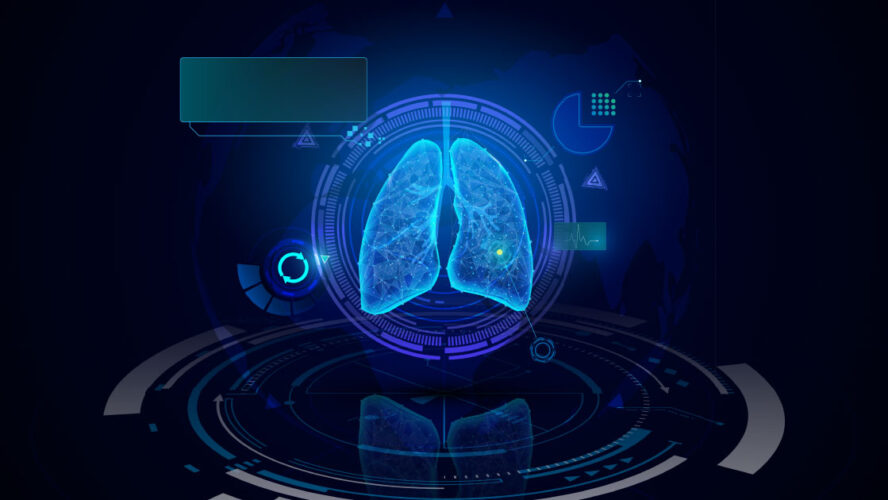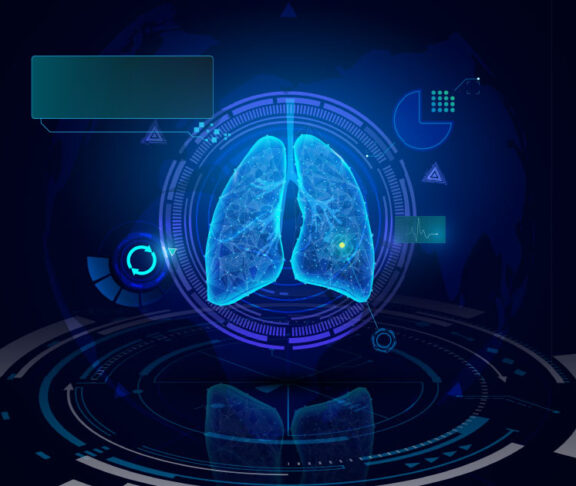Lung cancer remains the leading cause of cancer-related deaths in the country, with early detection being critical to improved survival. Yet only a fraction of eligible patients receive timely screening.

Nina Thomas, M.D.
Director, Thoracic Malignancy Pillar of Center for Lung and Breathing, University of Colorado Cancer Center; Assistant Professor of Medicine, Division of Pulmonary Sciences & Critical Care Medicine, University of Colorado School of Medicine; Member, Association of Cancer Care Centers
At the University of Colorado — UCHealth, University of Colorado Cancer Center, we are changing that narrative, using artificial intelligence (AI) to revolutionize how we identify and manage incidental lung nodules — unexpected findings on imaging scans that often go untracked.1
To do so, our AI platform uses natural language processing to scan radiology reports, identify lung nodules, and automatically stratify patients by risk. The AI technology solution integrates seamlessly with our healthcare system’s electronic health records, enabling automated patient communication, follow-up tracking, and real-time analytics. Primary care providers are automatically notified through the EHR when their patients are identified with incidental lung findings, receiving tailored follow-up recommendations based on risk stratification. Low-risk patients without a primary care provider receive automated, guideline-based follow-up recommendations, while high-risk patients are referred to our nurse navigators for review and coordinated care to ensure timely evaluation and management.
The AI platform continuously analyzes hundreds of thousands of imaging scans across our entire 15-hospital system, creating a comprehensive safety net that ensures no patient with a potentially serious finding is overlooked. Importantly, this AI technology does not replace human expertise; it enhances it. Our providers remain central to the process, verifying AI-flagged findings, making clinical decisions, and reaching out to patients with personalized care plans. Supported by the AI platform, our nurse navigators can focus their efforts on high-risk patients, ensuring timely diagnostics and interventions. This synergy between machine precision and human connection creates a powerful, efficient model of care.
Improving patient outcomes
The impact on patient outcomes has been profound. Within months of implementing the AI platform, we saw a 2,514% increase in actively managed patients, a 54% rise in return rates, and a 155% improvement in on-time follow-up adherence. Most importantly, by identifying more lung cancers at stage 1 — 40% compared to the national average of 20% — we are significantly increasing the chances of curative treatment. Timely follow-up reduces delays in diagnosis, while the automated reminders and tailored communication improve adherence and reduce patient anxiety.
For providers in the lung space, this approach to lung care is a blueprint for how AI can close care gaps, reduce disparities, and save lives. As we expand this approach to other disease states like pancreatic and thyroid nodules, it is a shining example of how technology and multidisciplinary providers can come together to transform patient care and improve patient outcomes.
References
- Thomas NA, Brown S. Creating a Community-Wide Safety Net with Centralized Tracking and Management of Incidental Lung Nodules. Oncol Issues. 2025;40(2):19-26. https://www.accc-cancer.org/docs/documents/oncology-issues/articles/2025/volume-40-number-2/19-26_thomas.pdf ↩︎

